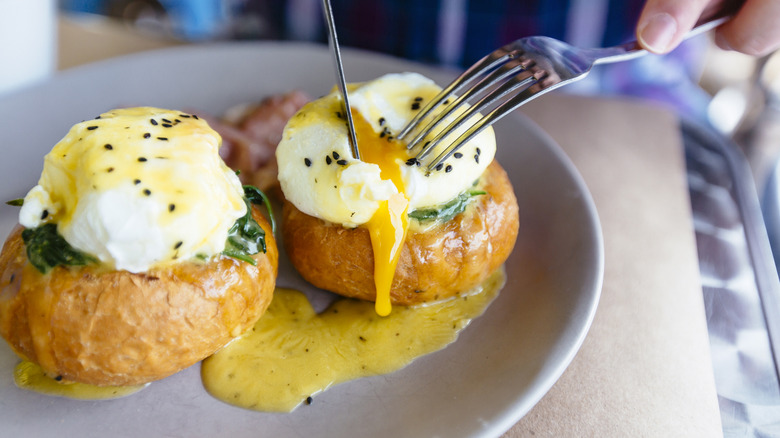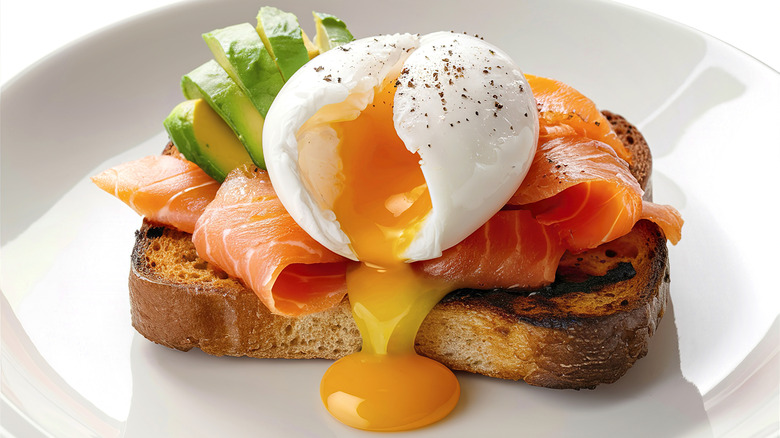The Egg Cooking Method That's Easier Than Poaching
Poached eggs really are a thing of beauty — if you can get them right, that is. As far as food goes, poached eggs can be temperamental to say the least. One day they're holding it together and popping open on demand, the next you've got a stringy white mess floating around in the water. Don't worry, it's not just you, there are some mistakes everyone makes with poached eggs. But, lucky for us, there is a genius fix: enter coddling. This cooking technique allows you to achieve the perfect poached egg, with no side of frustration for your breakfast.
Food Republic spoke to Maricel Gentile, Executive Chef and owner of Maricel's Kitchen and author of "Maricel's Simply Asian Cookbook," to find out exactly why coddling works so well. "Coddling is like a gentle pre-cook," she explained. "Warm the egg, in its shell or a container, in hot water — not boiling — usually just below boiling. The white of the egg will firm up so that when you crack it into the poaching water, it will hold together."
Coddling is also an egg cooking technique in its own right — where you place the cracked egg inside a pot and submerge the pot in boiling water — but warming the eggs in their shells for a couple of minutes before going on to poach is an ingeniously simple move. It means poached eggs with no vinegar clouding the water, no doing acrobatics with a slotted spoon, and no sad swirl of egg white disappearing into thin air
Tools and timing for perfect poached eggs
Here's possibly the best part: you don't need extra equipment to coddle eggs. As Maricel Gentile explained, "You can use a ramekin if you want to do it out of the shell. Or just keep it in the shell. Coddling cups make it easier, but they're not required." That means even the smallest of small kitchen set-ups — yes, even the ones with just one pot and a single wooden spoon — could theoretically pull this off.
To make Maricel's hack work for you, fill a saucepan with water and heat it to just shy of a simmer. Pop your egg in (fully shelled, for ease) as if you're going to boil it, but then take it out after one to two minutes. Remember you're not cooking it through — you're encouraging it to firm up slightly so that it behaves once it's time to get poached.
The result is a white that perfectly hugs the yolk, not one that cuts and runs halfway through cooking. With this trick, your eggs will be soft and rich and ready to eat as-is. Or you could use them in something incredible, like a truffle poached egg on toast recipe, perhaps. It's one small tweak for some big breakfast energy.


